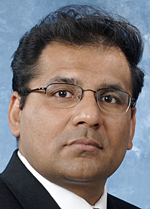| Research
|
|
|||||||||||||||||||||
|
Check out symmetry—the
|
DOE JGI collaborations bear fruit through USDA agreement and laboratory science programResponding to the escalating demand for DNA sequencing to unlock the potential of plants and microbes, the DOE and the U.S. Department of Agriculture (USDA) have announced they will collaborate to solve problems that are important to each agency's mission, while speeding the delivery of emerging technologies.
For first project growing out of the agreement DOE Joint Genome Institute (DOE JGI) will decode the DNA of the soybean, Glycine max, the world's most valuable legume crop. Soybean is of particular interest to DOE because it is the principal source of biodiesel, a renewable, alternative fuel. Biodiesel has the highest energy content of any alternative fuel and is significantly more environmentally friendly than comparable petroleum-based fuels—releasing only half of the pollutants and reducing the production of carcinogenic compounds by more than 80 percent. Over 3.1 billion bushels of soybeans were grown in the United States on nearly 75 million acres in 2004, with an estimated annual value exceeding $17 billion, second only to corn and approximately twice that of wheat. The soybean genome is about 1.1 billion base pairs in size, less than half the size of the corn genome. “The soybean represents an excellent example of how DOE JGI is playing a key role in ‘translational genomics,' applying the tools of DNA sequencing and molecular biology for crop improvement, from clean energy generation to plant disease protection,” said DOE JGI Director Eddy Rubin. The Soybean Genome Sequencing for Biofuels project originally sprouted through the new DOE JGI Laboratory Science Program (LSP). The LSP provides DOE National Laboratory researchers broader access to high-throughput DNA sequencing for DOE mission-relevant projects. Recently, a LSP lead was tapped in Gerald Tuskan, senior scientist in the Environmental Sciences Division at Oak Ridge National Laboratory. Tuskan got together with DOE JGI's Daniel Rokhsar and colleagues from the National Center for Soybean Biotechnology, the USDA Agricultural Research Service, Purdue University and the National Center for Genome Resources to make the soybean project a reality. “Sequencing the soybean genome will create new opportunities for the advancement of biodiesel as a economically viable transportation fuel,” said Tuskan. “Having the catalog of all soybean genes at our fingertips will facilitate the discovery of metabolic processes that will lead to improved oil production in the seeds and possibly through out the entire plant. Greater yields of oil per unit area of land will reduce the cost of production and move soybean-based biodiesel closer to your local gas station.”Submitted by DOE's Joint Genome Institute |


